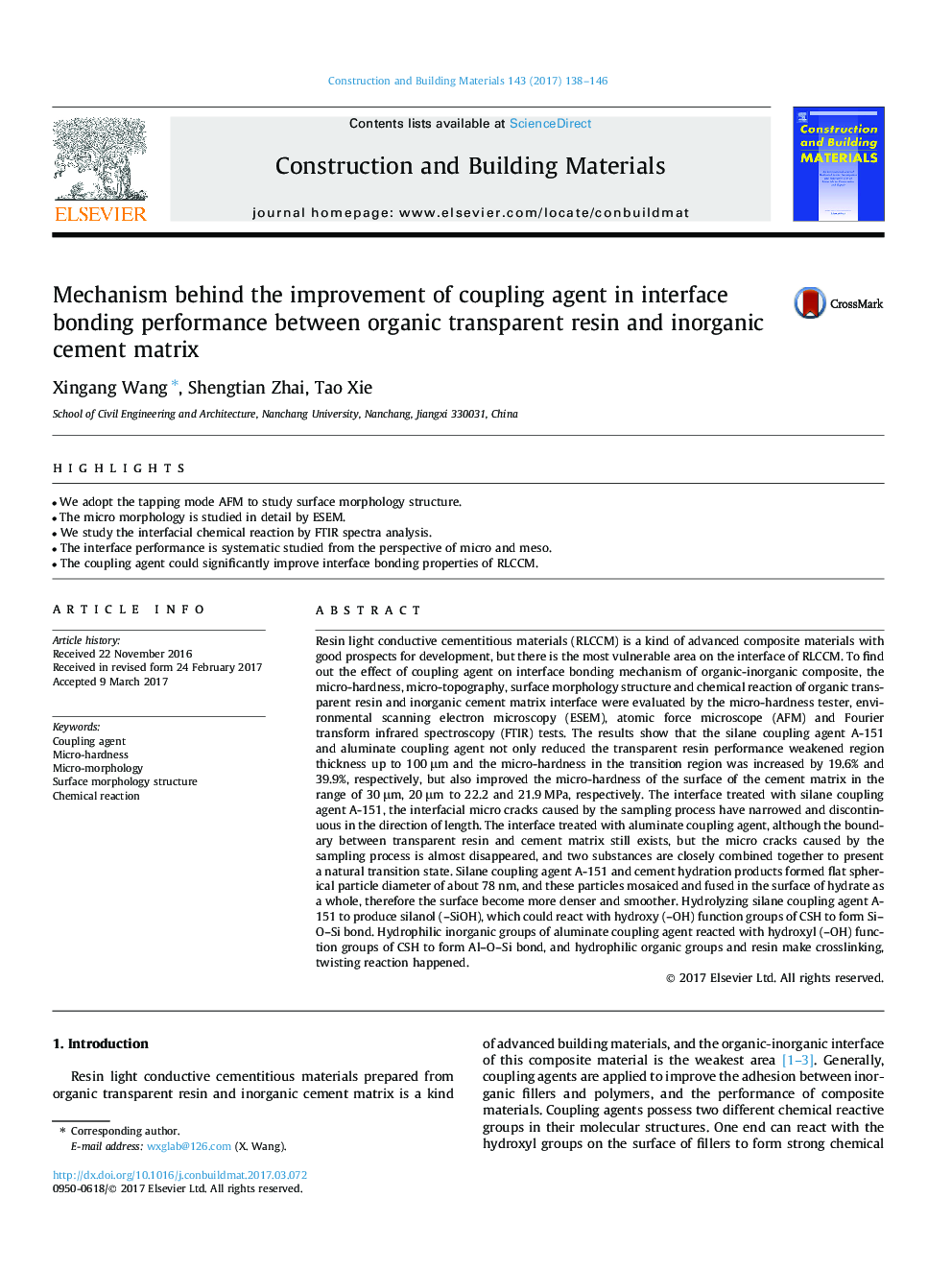| کد مقاله | کد نشریه | سال انتشار | مقاله انگلیسی | نسخه تمام متن |
|---|---|---|---|---|
| 4913226 | 1428763 | 2017 | 9 صفحه PDF | دانلود رایگان |
عنوان انگلیسی مقاله ISI
Mechanism behind the improvement of coupling agent in interface bonding performance between organic transparent resin and inorganic cement matrix
ترجمه فارسی عنوان
مکانیسم پشت بهبود عامل اتصال در عملکرد اتصال بین رزین از آلی شفاف و ماتریس غیر آلی است
دانلود مقاله + سفارش ترجمه
دانلود مقاله ISI انگلیسی
رایگان برای ایرانیان
کلمات کلیدی
عامل جفت، میکرو سختی، میکرو مورفولوژی، ساختار مورفولوژی سطحی، واکنش شیمیایی،
موضوعات مرتبط
مهندسی و علوم پایه
سایر رشته های مهندسی
مهندسی عمران و سازه
چکیده انگلیسی
Resin light conductive cementitious materials (RLCCM) is a kind of advanced composite materials with good prospects for development, but there is the most vulnerable area on the interface of RLCCM. To find out the effect of coupling agent on interface bonding mechanism of organic-inorganic composite, the micro-hardness, micro-topography, surface morphology structure and chemical reaction of organic transparent resin and inorganic cement matrix interface were evaluated by the micro-hardness tester, environmental scanning electron microscopy (ESEM), atomic force microscope (AFM) and Fourier transform infrared spectroscopy (FTIR) tests. The results show that the silane coupling agent A-151 and aluminate coupling agent not only reduced the transparent resin performance weakened region thickness up to 100 μm and the micro-hardness in the transition region was increased by 19.6% and 39.9%, respectively, but also improved the micro-hardness of the surface of the cement matrix in the range of 30 μm, 20 μm to 22.2 and 21.9 MPa, respectively. The interface treated with silane coupling agent A-151, the interfacial micro cracks caused by the sampling process have narrowed and discontinuous in the direction of length. The interface treated with aluminate coupling agent, although the boundary between transparent resin and cement matrix still exists, but the micro cracks caused by the sampling process is almost disappeared, and two substances are closely combined together to present a natural transition state. Silane coupling agent A-151 and cement hydration products formed flat spherical particle diameter of about 78 nm, and these particles mosaiced and fused in the surface of hydrate as a whole, therefore the surface become more denser and smoother. Hydrolyzing silane coupling agent A-151 to produce silanol (-SiOH), which could react with hydroxy (-OH) function groups of CSH to form Si-O-Si bond. Hydrophilic inorganic groups of aluminate coupling agent reacted with hydroxyl (-OH) function groups of CSH to form Al-O-Si bond, and hydrophilic organic groups and resin make crosslinking, twisting reaction happened.
ناشر
Database: Elsevier - ScienceDirect (ساینس دایرکت)
Journal: Construction and Building Materials - Volume 143, 15 July 2017, Pages 138-146
Journal: Construction and Building Materials - Volume 143, 15 July 2017, Pages 138-146
نویسندگان
Xingang Wang, Shengtian Zhai, Tao Xie,
